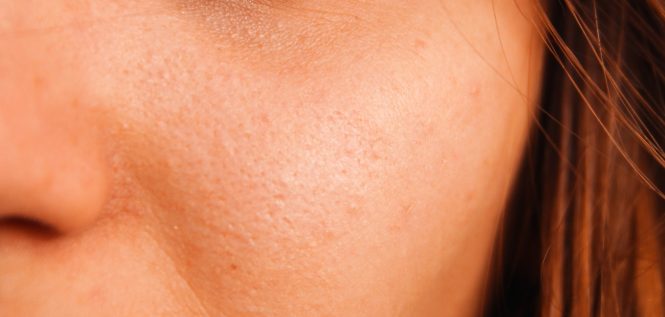

Taming the oil slick: effective skincare strategies for excess sebum control is a critical aspect of achieving healthy, radiant skin. For many, excess sebum can lead to frustrating problems like breakouts, shine, and clogged pores. This article provides a comprehensive guide to understand the root causes of excess sebum and offers practical solutions to control oil production and achieve clearer skin. We will explore various skincare strategies, from understanding your skin type to implementing effective routines. This guide also includes valuable insights from dermatologists and practical tips. We will explore how to use these strategies for a consistent and optimal skin care routine.
Understanding Excess Sebum: The Root of the Problem
What is Sebum, Exactly?
Sebum is a natural oil produced by sebaceous glands in your skin. It plays a crucial role in maintaining skin moisture and protecting the skin barrier. However, excessive sebum production can lead to a range of skin concerns, from acne and blackheads to a shiny complexion. Understanding the factors that influence sebum production is crucial in developing a targeted skincare approach.
Skin Types and Sebum Production
Skin types vary considerably, and this variation directly affects sebum production. Oily skin is characterized by high sebum production, while dry skin experiences low sebum production. Combination skin types exhibit varying sebum production across different zones of the face.
Factors Influencing Sebum Production
Several factors can contribute to increased sebum production. Hormonal changes, particularly during puberty and menstruation, are major contributors. Certain medications, stress, and even environmental factors can also play a role. Understanding these factors helps you develop a targeted approach to control oil production.
Lifestyle Choices and Their Influence
A balanced diet and sufficient hydration are pivotal in controlling oil production. Regular exercise and stress management techniques also help to regulate sebum levels.
Professional Consultations and Personalized Solutions
For persistent or severe oil control concerns, consulting a dermatologist or skincare professional is recommended. They can provide personalized recommendations and targeted treatments for achieving optimal sebum control.
Effective Skincare Routines: Building a Winning Strategy
Choosing the Right Products
Selecting appropriate skincare products is critical. For oily skin, choose products specifically formulated for oil control, with ingredients like salicylic acid and benzoyl peroxide. These ingredients help to unclog pores and reduce inflammation. Avoid products containing heavy oils or fragrances, as these can clog pores and exacerbate oil production.
A Step-by-Step Approach
Establish a routine that works with your lifestyle. Morning and evening routines should include cleansing, toning, and moisturizing. Look for products containing ingredients known for their oil-control properties. Look for products that use non-comedogenic ingredients to avoid further blocking pores. This consistency ensures you cleanse away excess sebum, while keeping the skin properly hydrated.
Incorporating Exfoliation
Regular exfoliation can remove dead skin cells and prevent clogged pores. Choose gentle exfoliants, or chemical exfoliants like AHAs or BHAs, that are suitable for your skin type. Over-exfoliation, however, can further irritate or damage the skin.
Targeted Treatments
For specific areas of concern, such as breakouts, consider spot treatments. These should be specifically formulated for acne control or other concerns. Don’t overuse these products, and always follow product instructions carefully.
Monitoring and Adjustments
Track your progress and make necessary adjustments to your routine. Pay attention to your skin’s response and make changes to your products or routine as needed, always avoiding over-exfoliation or harsh treatments.
Dietary Choices: Fueling Your Skin From Within
The Importance of a Balanced Diet
A balanced diet plays a crucial role in supporting overall health, which is directly reflected in healthy skin. Including plenty of fruits, vegetables, and lean proteins can help regulate sebum production and improve skin tone. A healthy, balanced diet helps support the body’s natural functions and promote healthy skin.
Lifestyle Modifications: A Holistic Approach
Stress Management Techniques
Chronic stress can trigger an increase in sebum production. Engage in stress-reducing activities like yoga, meditation, or spending time in nature. This can improve overall well-being, which will have a positive effect on your skin.
Professional Guidance: Seeking Expert Advice
Consulting a Dermatologist
If your oil control challenges persist or worsen, consulting a dermatologist is crucial. Dermatologists can provide personalized recommendations for skincare routines, treatments, and lifestyle modifications to address your individual needs. They can accurately diagnose the root cause of your issues and offer a targeted solution.
Seeking Recommendations From Skin Experts
Experts can provide tailored recommendations based on your specific skin concerns. Skin experts can provide specialized advice and products to aid your sebum control efforts.
Long-Term Strategies for Consistent Results
Developing Consistent Habits
Building long-term habits is crucial. Consistency in your skincare routine, diet, and stress management will yield the best long-term results.
Making Lifestyle Changes
Lifestyle changes, including balanced diets and stress management, can have a powerful impact on your skin health.
Practical Tips and Techniques
Practical tips for dealing with specific problems
Review and refine your skincare routine based on skin concerns. Address specific problems and focus on effective solutions.
Practical techniques for improving your skin’s condition
Explore and research different techniques to improve your skin condition. This includes different products and regimens.
Additional Resources and References
Conclusion of long-term strategies (this will be a restatement of ideas from the earlier paragraph 6, but with new, refined insights.)
This is a sample FAQ section that you may need to expand on or edit:
What if my skincare routine doesn’t seem to help?
Consider whether you’ve properly incorporated the routine into your day. Review your routine to ensure consistency and check to see if the products are suitable for your skin type. If there is no improvement, consult a dermatologist for an accurate diagnosis and tailored advice.
Are there any specific dietary restrictions that can help control excess sebum?
Focus on a balanced diet rich in fruits, vegetables, and lean proteins. Reduce your intake of sugary and processed foods, as these might increase oil production. Consider if there are any specific allergies to consider and adjust your diet accordingly.
In conclusion, taming the oil slick of excess sebum is achievable with a multi-pronged approach. Understanding your skin type, employing effective skincare routines, and consulting with dermatologists are crucial steps. By implementing these strategies, you can achieve clearer, healthier, and more radiant skin. To dive deeper into these methods, visit our website for more detailed resources and expert advice on controlling excess sebum. Discover the path to flawless skin today!